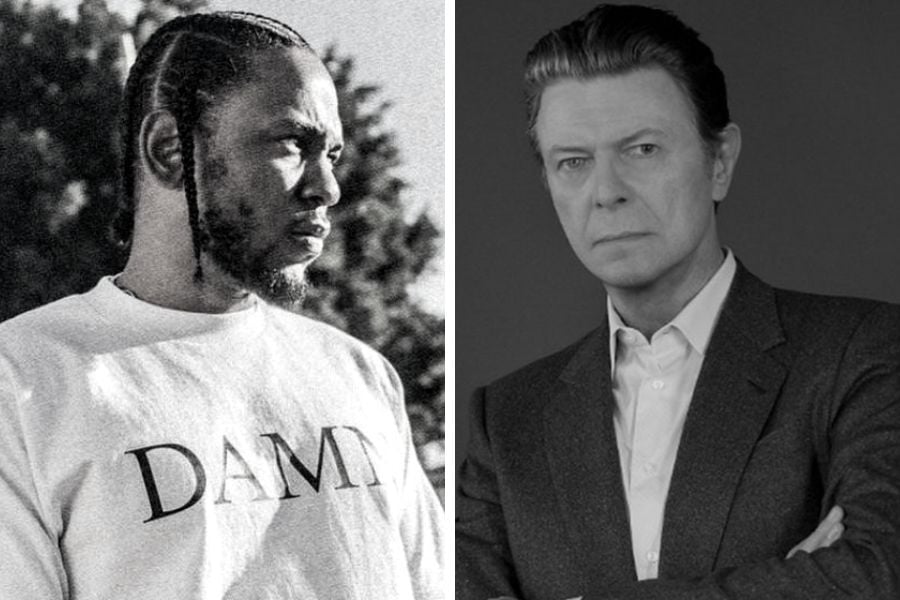David Bowie was an artist of two halves. There’s Bowie the rulebreaker, and then there’s Bowie the magpie. The latter is arguably the most important. Bowie’s ability to take inspiration from almost anywhere allowed the iconic musician to remain relevant throughout the course of his 50-year career. He had a knack for picking out the most exciting features of a new trend or genre and expanding on them with extraordinary originality. Indeed, after his death in 2016, it became clear that much of the singer’s genius lay in his ability to meld disparate art forms into one all-encompassing spectacle.
Following his glam-rock phase, for example, he looked to America for new creative catalysts. The result of this investigation was Young Americans, an album that drips with sun-drenched soul, R&B, and Motown. Then, in the 1980s, Bowie found disco and ended up producing the iconic track ‘Let’s Dance,’ as much a floor-filler as Chic’s disco classic ‘Le Freak’. Even towards the end of his life, David Bowie refused to give in to creative apathy. Instead, he kept a watchful eye on the industry’s most exciting and pioneering artists – waiting for something to illicit that surge of creative energy that had foreshadowed many of his greatest albums. During the creation of Bowie’s 2016 album Blackstar, which was released just two days after his death, there was one specific artist who did just that: the experimental rapper Kendrick Lamar.
Blackstar felt like nothing else David Bowie had released before. Not only was it coloured by his tragic passing, but it also seemed imbued with a range of styles that the musician had scarcely had the courage to touch in previous decades Recorded in secret with the help of producer Tony Visconti and a band of local New York jazz musicians, Blackstar blended the ambient textures of Boards Of Canada, with the off-kilter rhythms of Death Grips and jazz-infused arrangements of Kenrick Lamar.
Somehow, however, Visconti still managed to produce an album that is instantly recognisable as a product of Bowie. Blackstar references its influences in a way that only adds to their value. It’s as though Bowie held Lamar’s work under a microscope and extracted a strand of its DNA, blending it with his own to produce something strange, unfamiliar, and astoundingly fresh.
As Visconti recalled, the musician’s passion for Kendrick Lamar’s era-defining blend of jazz and classic hip-hop heralded a new musical landscape away from the rock sound that had defined many of Bowie’s previous records. “We were listening to a lot of Kendrick Lamar. We loved the fact Kendrick was so open-minded and he didn’t do a straight-up hip-hop record. He threw everything on there, and that’s exactly what we wanted to do. The goal, in many, many ways, was to avoid rock & roll,” Visconti said.
One of the main things Bowie took inspiration from was Lamar’s avant-garde spirit, his ability to make something both accessible and experimental at the same time. With albums like To Pimp A Butterfly, Lamar deconstructed hip hop, taking it down to its very foundations and then rebuilding it in his own image.
As an artist, Lamar refuses to recycle the same tired formulas, preferring to invent his own frameworks through which he captures the same intoxicating energy that has defined man of the greatest hip-hop records. Describing that same record, Visconti said: “To Pimp A Butterfly broke every rule in the book and he had a number one album glued to the top of the charts. You’d think certain labels would learn from that. But they take somebody who is out there and say, ‘That’s what people want.’ No, people want that for one week. You don’t want the same song every single day of your life.”
Bowie likely saw something of himself in Kendrick Lamar. He, too, had spent a career spent his career continually re-defining the nature of popular music, treating it with a malleability that has allowed both musicians to create some of the most surprising and subversive music of all time.
